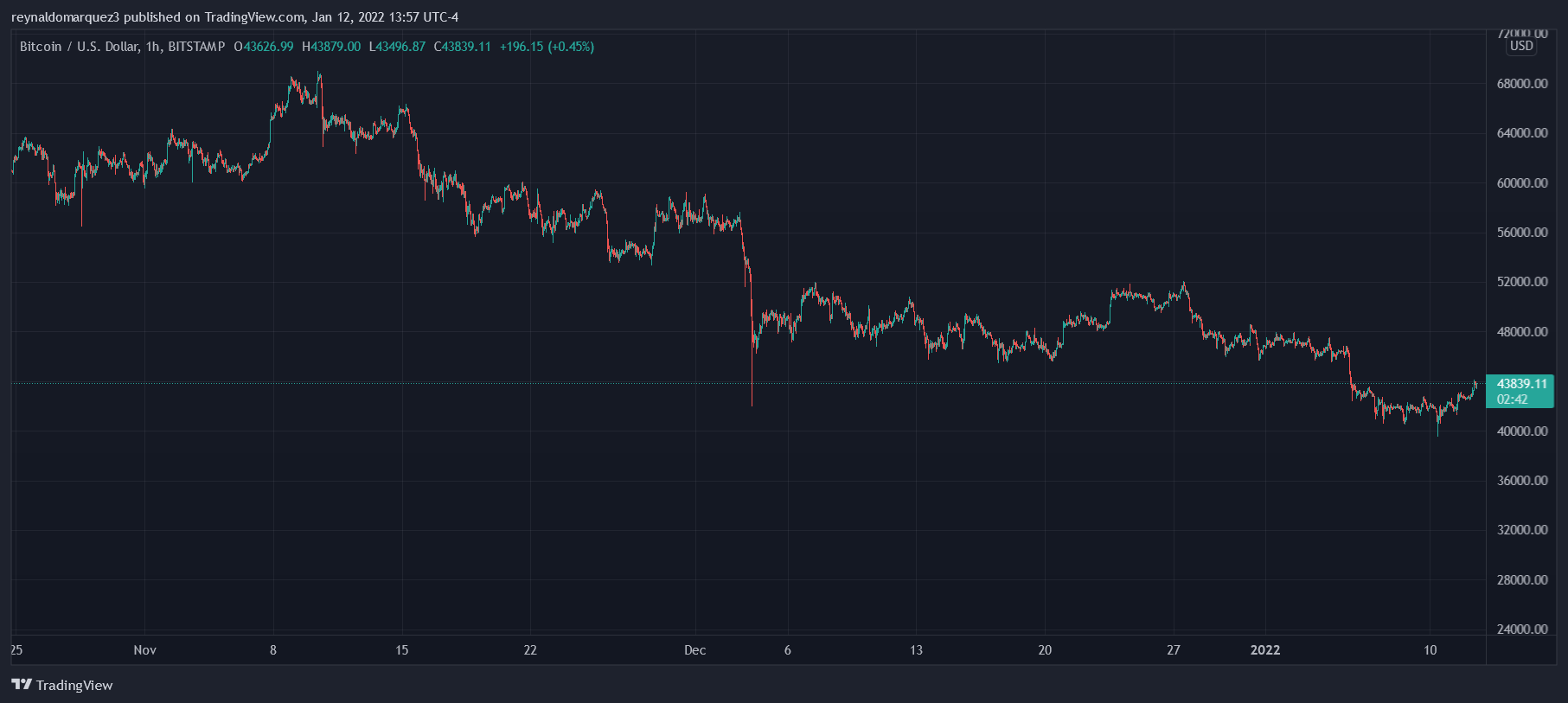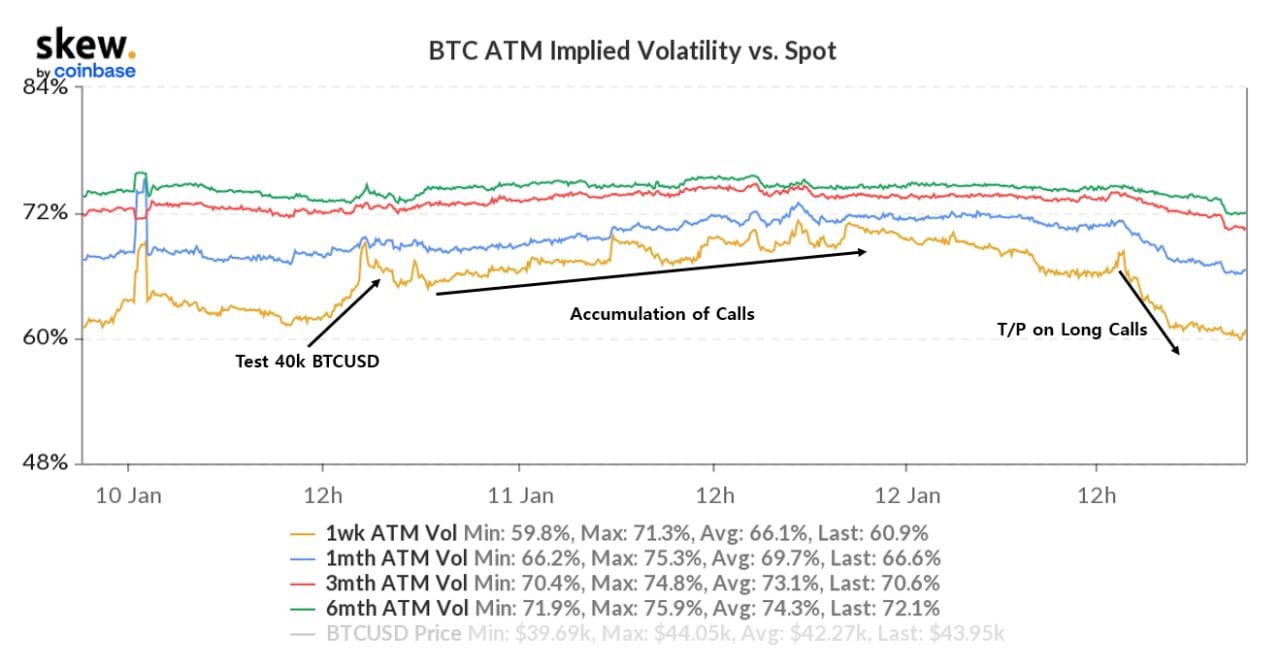Bitcoin has lost some steam in the last 24 hours as it struggles to break above the $44,000 resistance. The first crypto by market cap trend to the upside on the back of the most recent U.S. CPI print, a 7% that fell under investors expectations, but seems poised to take another swing at the lows.
Related Reading | The Biggest Risk For Bitcoin? How Quantum Computers Could Hurt BTC
As of press time, Bitcoin (BTC) trades at $43,793 with sideways movement in a day and small gains over the past week; the benchmark crypto has been struggling since the start of 2022.

BTC’s most recent price action seems to correspond with macro-economic factors, mainly its correlation with the U.S. equity market. The cryptocurrency and this country’s stocks, as measured by the S&P 500 (SPX), have been suffering due to a potential increase in interest rates by the U.S. Federal Reserve.
According to data provided by Delphi Digital, the SPX and Bitcoin correlation is near previous highs sitting at 0.6. Both assets have seen an increase in this metric since the end of Q4, 2021 when the macro factors began to gain more relevance, especially the potential effect of rising inflation in the FED’s monetary policy.

Bitcoin used to trade with a low correlation with U.S. stocks, Delphi Digital claims. This changed with the COVID-19 pandemic and with the arrival of institutional players into the crypto market. The research firm added the following:
Over the past month, the correlation between BTC and SPX has increased, as both risk assets were similarly affected by hawkish Fed comments (…). As institutional adoption in BTC increases, we will likely see an even higher correlation in the future.
Thus, the way the traditional market performs, and while macro factors are still in play, Bitcoin will remain susceptible to its swings. At the moment, the performance in U.S. equity seems to favor more upside for the benchmark crypto.
How Institutions Are Affecting The Price Of Bitcoin
On the other hand, investment firm QCP Capital records an interesting behavior coming in from the Options market, and also triggered by institutional participation in the crypto market. In a recent post, the firm noted a dropped in Bitcoin’s At The Money (ATM) Implied Volatility.
As seen below, this metric dropped from 70% to below 60% as BTC’s price retested critical support at $40,000. During this period, QCP Capital also recorded an increase in the number of options calls that preceded the aforementioned drop in BTC’S ATM Implied Volatility.

This suggests big players took some profit on their options, later started taking new positions, to return to collect profits as Bitcoin rallied into the mid area of its current levels. In that sense, the firm made the following conclusion:
The crypto option market has reached a critical size where it is starting to have material impact on spot markets. For instance, one key reason for the lack of follow through in BTC and ETH below 40,000 and 3,000 is possibly the few large players owning strikes around those levels.
Related Reading | Bitcoin Soars 5%, Why FED Powell’s Nomination Could Give It New Momentum
The fact institutional players held calls for BTC at $40,000 created support for the price and contributed to the recovery. The firm believes institutions bid on BTC as it dropped to benefit from their option positions. Conversely, this has been affecting the rally as they take profits on their calls.
16/ We think option activity will increasingly dictate spot movements as the option market continues to grow. It might be worth keeping a close eye on this market (if you aren't already doing so).
— QCP Capital (@QCPCapital) January 13, 2022
 bitcoinist.com
bitcoinist.com